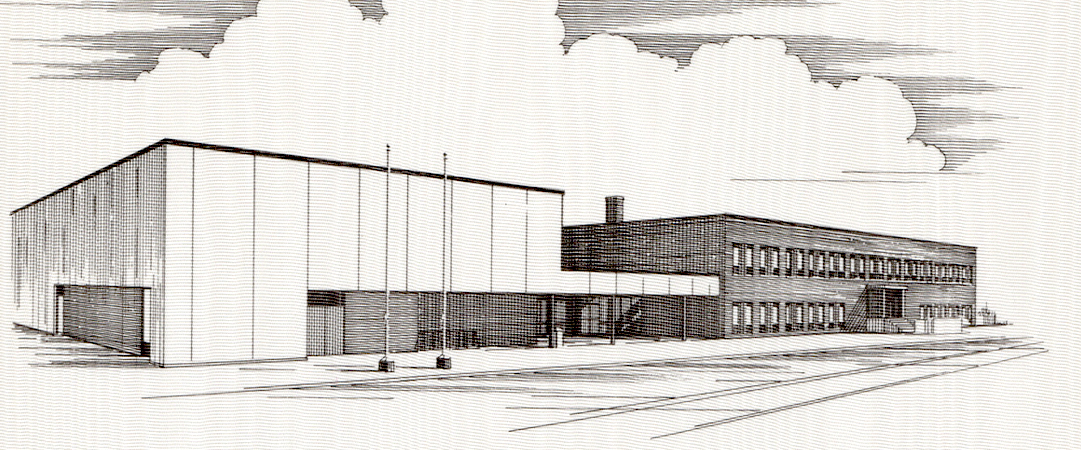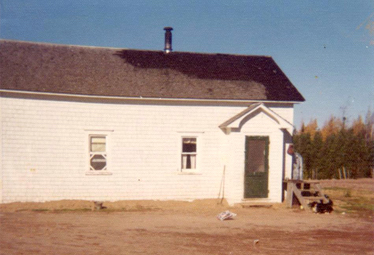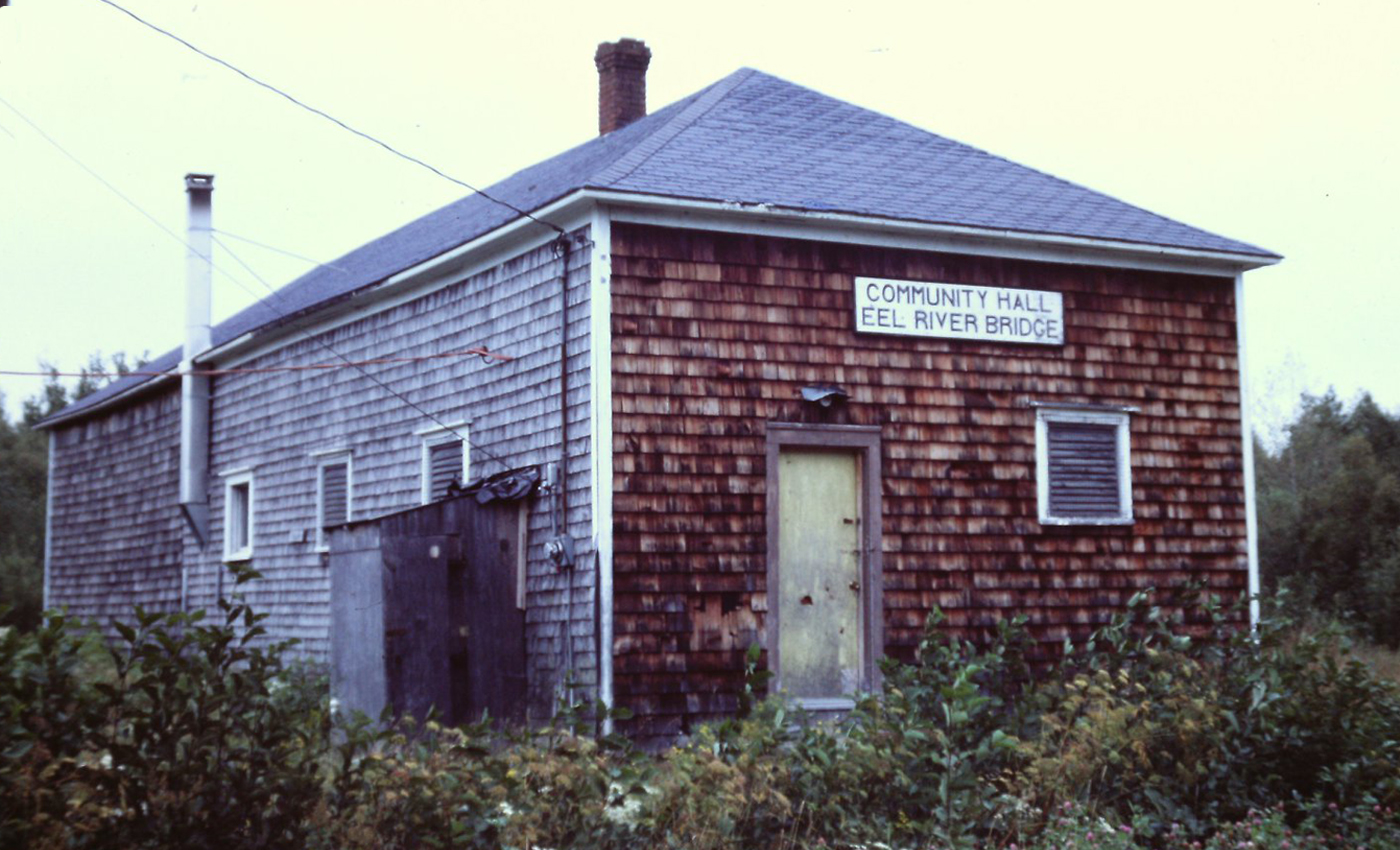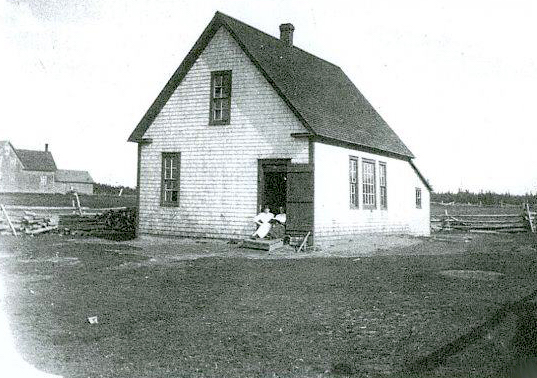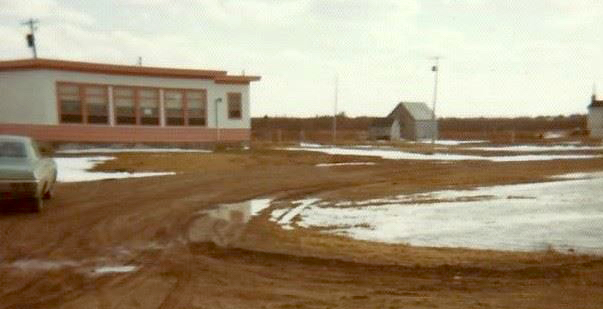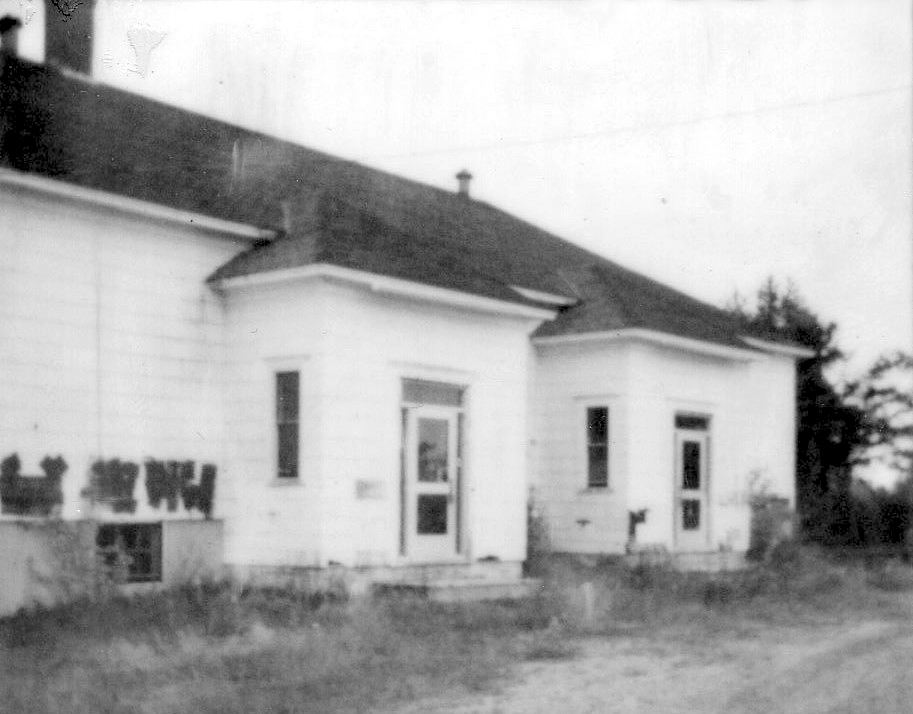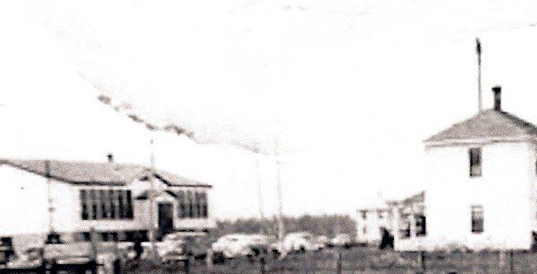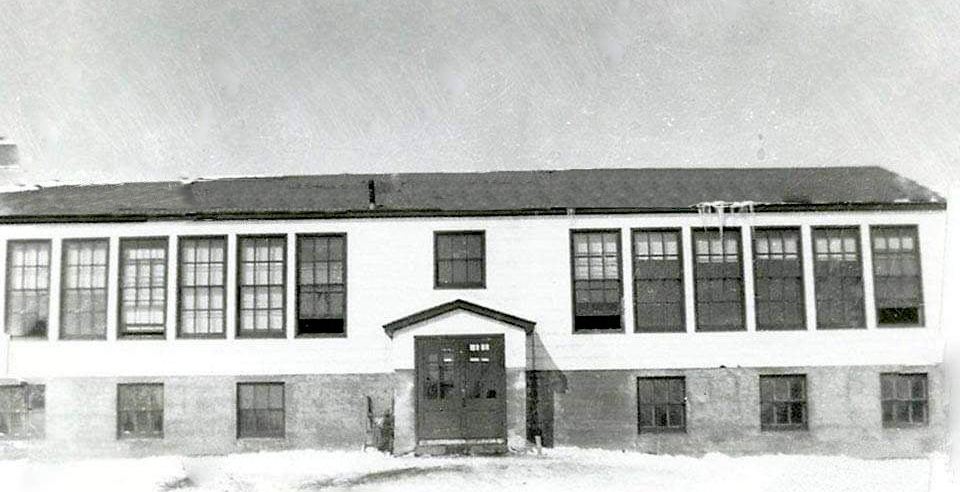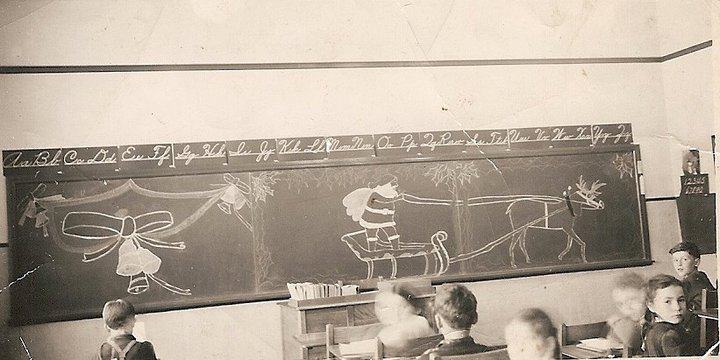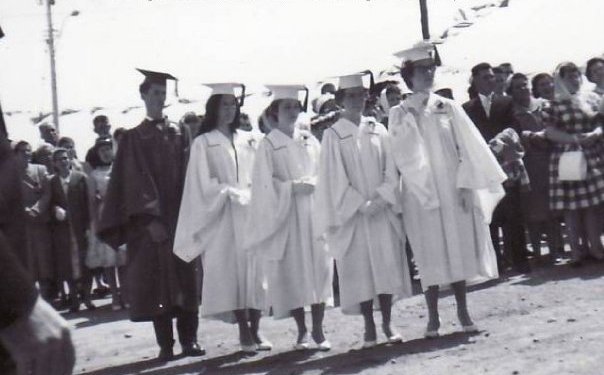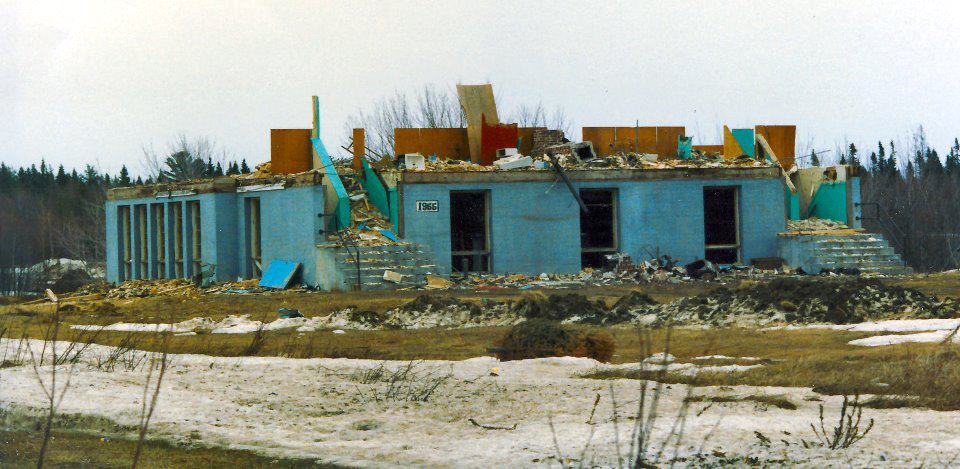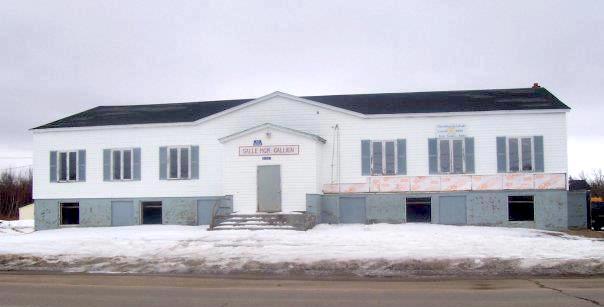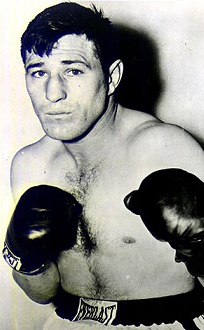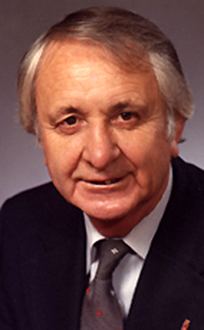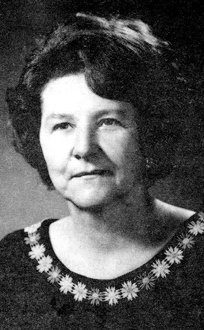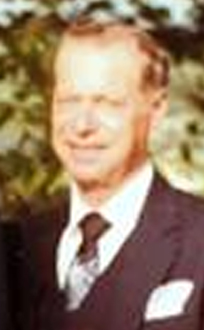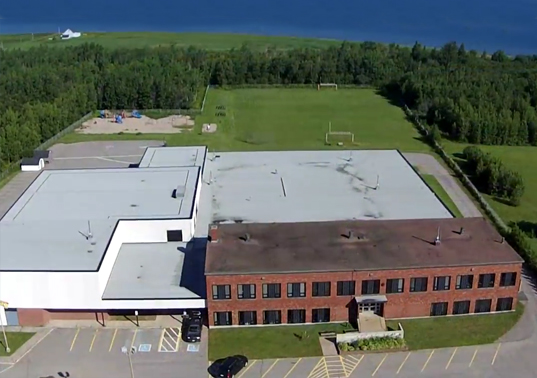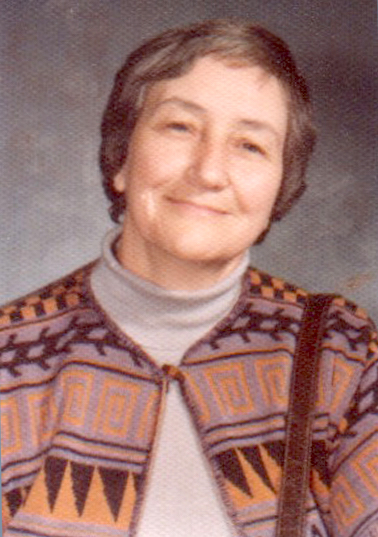HISTORY
Everyone knows the story of the little pigs. First there was a straw house, then a wooden house and finally a brick house. Here, we started with small white schools and ended up with the big schools and had learned from experience, but their early efforts were as commendable as their late efforts. It is the same with our schools in Baie-Sainte-Anne and this is the reason for a history of our schools in today's program.
Often when we inaugurate a school, people tend to attribute the merit only to those immediately responsible. However, the construction of a school such as this is the end of an often long and difficult process which involves both the constructors of the past and those of the present.
And if I agreed to share with you some historical facts or anecdotes concerning the schools that the oldest ones told me, it is because I believe in the capital importance of the work of our predecessors and also because the interest that I have for schools is partly due to two experiences which marked my childhood and which stimulated my approach. Firstly, I was always intrigued during my first years at school by the fact that my father would sit with me at the table every night when I was studying my French reading, not to help me, but so that I could help him learn to read. The school he attended only taught in English. Secondly, I often made my grandmother tell me why they had come to settle in Baie-Sainte-Anne after leaving the Magdalen Islands. She told me: "We simply wanted to make a life and the location seemed promising, but we weren't sure we would stay, because my parents had set a condition: they would stay if they managed to obtain French schools. " Subsequently, his father, Hyppolite Thériault, was elected school commissioner and fought fiercely until he won his case.

Towards the end of the 19th century, families from the Magdalen Islands joined the existing population.
These facts bring us back to the little gray schools. In fact, a hundred years ago the first schools in the village were built. One was built in Sargent's Road and the other in Eel River on the land where Normand Duguay is currently living. The one in Sargent's Road was intended for students from Escuminac and the Baie, while Eel River served students of Portage River. In these schools, lessons were given entirely in English. It was not until 1912 that the Eel River School had its first French teacher. The one in Sargent's Road had to wait a few more years.
Sargent's Road Hardwood School.
By 1915, two schools were no longer enough for the number of students and we decided to build a new school in Eel River, the one which later became the Community Hall. This was a question that was not resolved overnight. The battle came down to choosing a location and which side of the river would win. There was no bus service then and the school had to be centrally located. But where was the center? We had different ideas on that. Finally we stopped at the current ground, when we were assured of a service to cross the students to the other side of the River.
Eel River School.
Later in the 1920s, a new school was built in the center of Portage River where the current 'Caisse Populaire' is located. This school also served some of the students from the Baie.
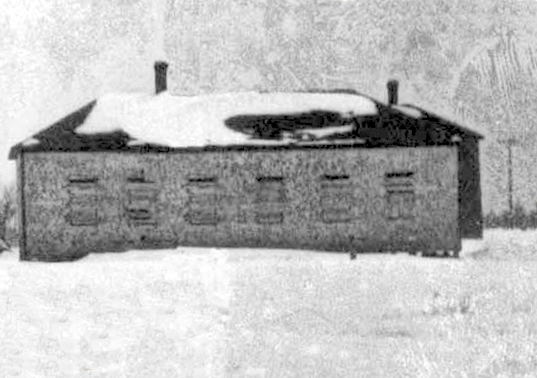
A new school on the land where the 'Caisse Populaire' is currently built.
And in the Baie itself, we didn't have a school yet. It was not until 1935 that this situation was resolved. Escuminac had its own school then, and the Hardwood School only had 6 students from Sargent's Road while the other 72 came from the Baie. Msgr Arthur Gallien was parish priest here at the time and he was determined to take this school out of the woods and transport it to a central area along the main road where the majority of the population was. But the school commissioners, with an English-speaking majority, were not of the same opinion. However, the School Inspector, wanting to calm things down, had written to the commissioners telling them that the school would not be moved, and to Father Gallien, I do not know by what trick, managed to get his hands on the letter from the commissioners and provided the two contradictory letters, headed at full speed towards Chatham straight to Mr. Inspector's office. When he arrived he said to him: "Mr. Inspector, you are a man with two faces: first letter, first face; second letter, second face." In order not to lose face further, Mr. Inspector felt obliged not to oppose the school's move too much.
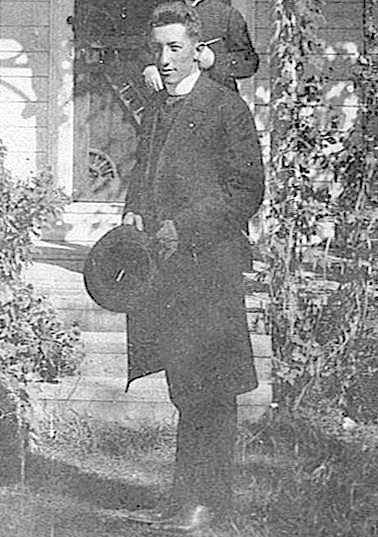
Monsignor Arthur Gallien.
The Escuminac schools.
Afterwards we experienced a lull and our three small schools continued for another ten years. It must be said that these schools had a certain charm and that they accomplished their mission. Of course, these were modest schools, with one room, or at most two rooms. The stove installed in the center of the classroom did not warm everyone. To drink, we went to get water from the neighbour. Students had to take on the cleaning task and the outdoor toilets were not cleaned or washed every day. All the same, the students were quite happy - except during the visit. We were afraid of visitors and for good reason. The visit was limited to the commissioners, who came to inform about discipline; to the Inspector, who questioned us in English and from whom we had to hide our catechisms and our crucifixes; from the priest, who came to make sure we knew our catechisms well and finally to the doctor, who dared to examine the scalp.
Immediately after the World War II, we began to think about replacing our small schools. The school population had increased and more comfort was demanded. We planned to build schools with 3 or 4 classes that were more spacious and brighter lights. These schools would be equipped with furnaces and running water. Also they would have a good foundation which would serve as a basement. They would be covered with slate shingles. It was a great project, one might say, but one that left many indifferent, not to say furious. And the discussions were gaining momentum. The company, according to some, was extravagance and even wasteful and people were opposed to: too many classes, too many teachers to pay, the indoor toilets and especially the too large basement, because they said, a basement is for storing meat, fish, vegetables and preserves, so a school does not need a basement.
One last school for the Eel River.

A former student,
Gerry Mazerolle,
on the footbridge.
Still, the opposition of a few did not prevent the construction of our white middle schools and in 1948 we first established a 4-class school in the Baie, named 'Ecole élementaire de Baie- Sainte-Anne' and then a 3-class school at Eel River. The footbridge was installed for the students. We finally built our last white school at Portage River in 1955. It was a 4-class school named 'Ecole Manuel'.
On the left: the Baie-Sainte-Anne Elementary School.
On the right: the sisters' convent.
Baie-Sainte-Anne Elementary School was later named 'Salle Monseigneur Gallien'.
Inside Mrs. Elmire (née Forbes) Martin's classroom in 1948.
Almost unbelievable, but after 3 years the contributions were already planning another construction. Our white schools were already too small and it was high time that Baie-Sainte-Anne had a high school. We were thinking of a school with around ten classes for students in grades 7 to 12. Here again we encountered a lot of opposition, it was necessary:
1- To convince a lot of people the necesitty of a high school,
2- Group the students of the parish when everyone was keenly attached to their locality,
3- Find a suitable location,
4- And finally find the money, because even by combining the 3 schools we did not have enough to build a school of this size; a big 54,000$ was missing.
While waiting to attack and resolve all these problems, we decided to set up classes everywhere to teach from the 9th grade. This is where we used the old gray school of Portage River which was not yet demolished, the basement of the church and even the sacristy of the church.
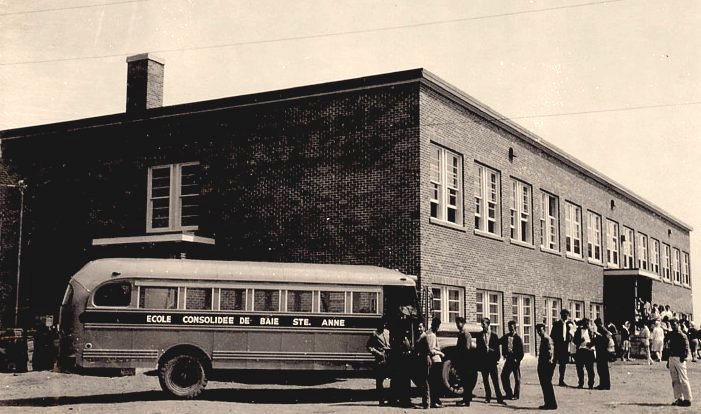
An ordinary day in front of the brick school.
All the challenges overcome, we witnessed on July 2, 1961, the inauguration of our beautiful large brick school as well as the first graduation. There was general enthusiasm. And in the space of 20 years the school has had over 300 graduates.
Our five graduates at the first graduation in 1961.
Everyone thought that the question of school construction would not arise for at least 50 years.
But we had to keep up with our times. It was the Byrne report, the reorganization of school districts, the demands of modern technology and our school no longer met the needs of the day. We were still stuck in a dead end:
-Were we going to go to James M. Hill of Chatham and risk assimilation?
-Were we going to go to the Saint-Louis high school and risk our health?
-Were we just going to stay in Baie-Sainte-Anne and demand the construction of a new school?
The demolition of the old 'Manuel School.'
The demolition of the old 'Baie-Sainte-Anne Elementary School'.
Everyone knows that we opted for the last alternative, but it was not easy. And there you have it. We now have a wonderful school. However, I would like to emphasize in closing that a good school is only one aspect of education. What matters is the product of our schools. All the same, I view the future with optimism, because I base myself on the past, and we are proud of the hundreds of capable, dynamic and committed people who have graduated from our schools at all levels. Four of these valiant people come to mind who made the name of our village resonate beyond New Brunswick and even Canada.
-Yvon Durelle, whose sporting exploits led him to the Hall of Fame, and most recently spoiled us with his book "The Fighting Fisherman."
-On the political scene, Senator Norbert Thériault has climbed the ranks to reach the top.
-In the field of education, the champion is none other than Mrs. Blanche (née Schofield) Bourgeois. In 1980, she was named Canadian Teacher of the Year.
-And very recently, we have just acclaimed one of our own, Mr. Charles D'Amour, in the world of journalism. On April 21, he became a member of the Order of Canada and was decorated by the Governor General, Edward Schreyer.
Yvon
Durelle
Norbert
Thériault
Blanche
Bourgeois
Charles
D'Amour
Isn't it that the achievements of the past challenge the future? We have work to do. It's up to all of us: school counselors, parents, teachers, students, to continue to surpass ourselves.
Mrs. Lorraine Savoie
May 16, 1981
The view from a drone in 2016.
A career teacher for 34 years, Mrs. Lorraine (née Gibbs) Savoie was the founder of the Baie-Sainte-Anne home-school, the SERF Alcide F. LeBlanc circle and earned the 1995 Retiree of the Year award from the SERF provincial for its contribution to the cause of education for Acadians and francophones in NB.
